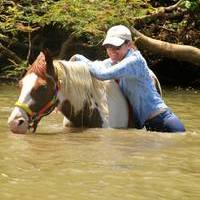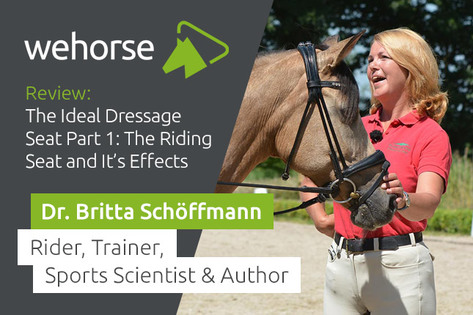
What Should Your Horse Weigh?
Equestrian Advice & Guides Beginners Advice
Build your business profile for FREE and expose your services to thousands of potential clients!
Create my profile now!
As a biomechanics coach, I’m always interested in other trainer’s perspectives on the subject. Recently, I watched Dr. Britta Schöffmann present her video, ‘The Ideal Dressage Seat Part 1: The Riding Seat and It’s Effects’, on the wehorse site.
In many ways, our teaching mirrors each other’s – I like her description of the straight line running shoulder, hip to heel, and it was useful to see her standing on the ground alongside the horse and show what would happen to her balance if she were to try and push her feet in front of her in the same way.
The lines running elbow through rein to bit are also clear, and although she doesn’t mention it, it was clear to see that the rider she has set up also has the straight lines of elbow to bit rings from above – the rider’s body is the widest point, bit is the narrowest and the rider’s wrists somewhere in between.
The rider gave a clear view of one of the most common rider faults when asking the horse to yield from her leg – the drawing back of the leg and turning in with the heel, and again the correction was clear – we don’t need to move our leg, or “use more leg”, to get the horse’s attention, simply give clear, light aids.
My personal teaching of the weight aids is slightly different, employing tensegrity and sliding a seat bone forward, but overall, I found this video useful and clear, a great starting point for any rider who is new to the concepts of a balanced seat and biomechanics.
Watch the trailer for this video tutorial...
Head over to the wehorse site now to see how you could benefit from their fantastic training tutorials > https://www.wehorse.com/en/

